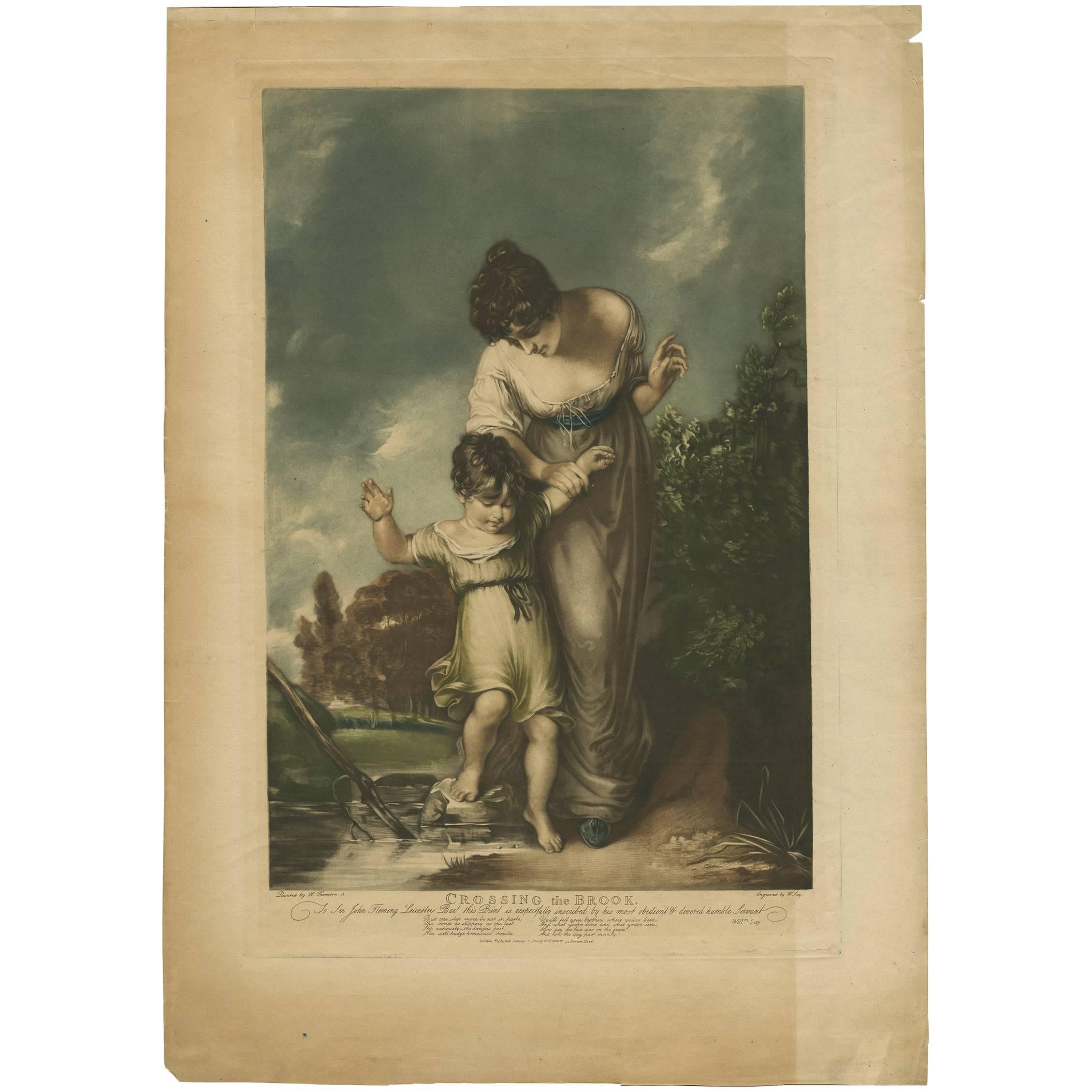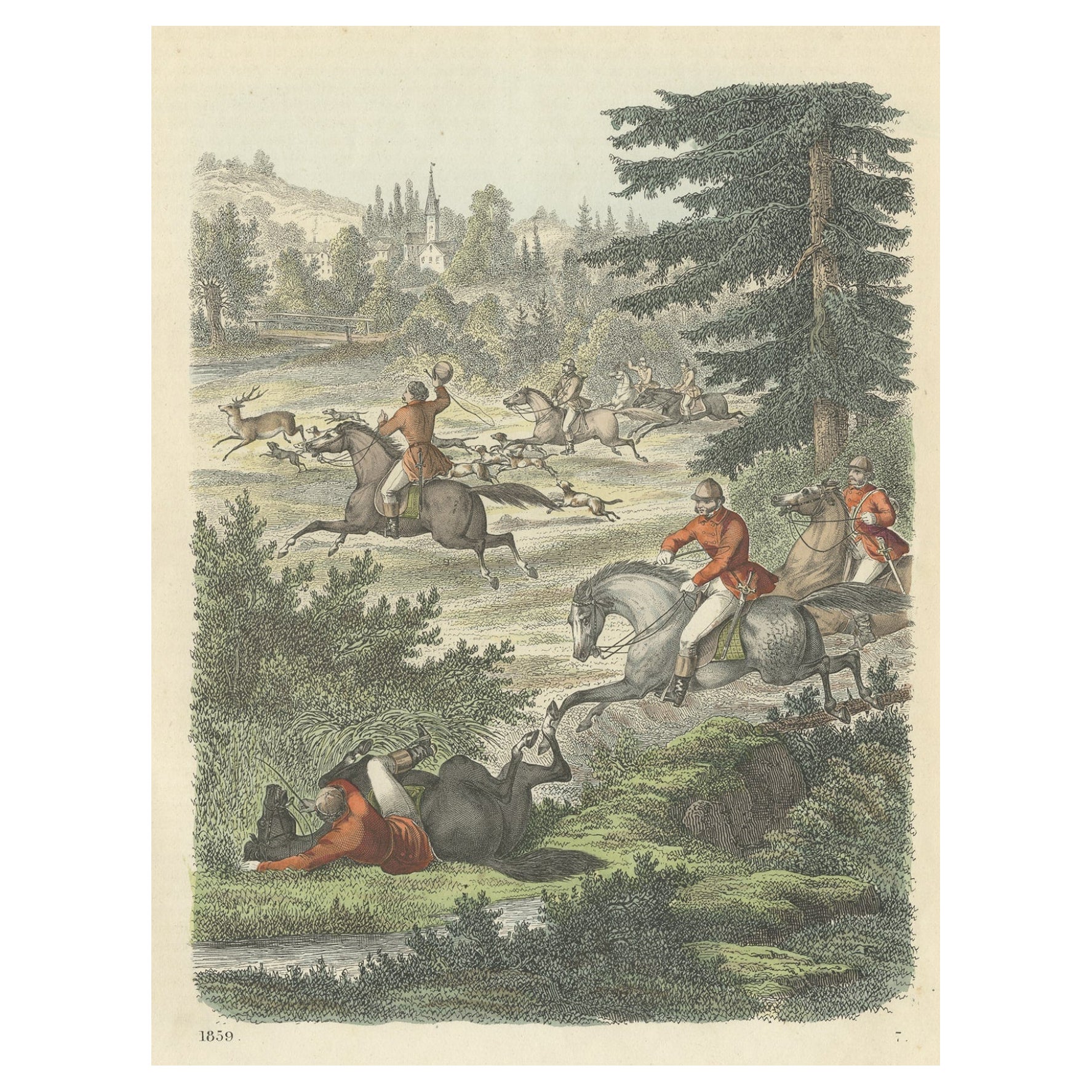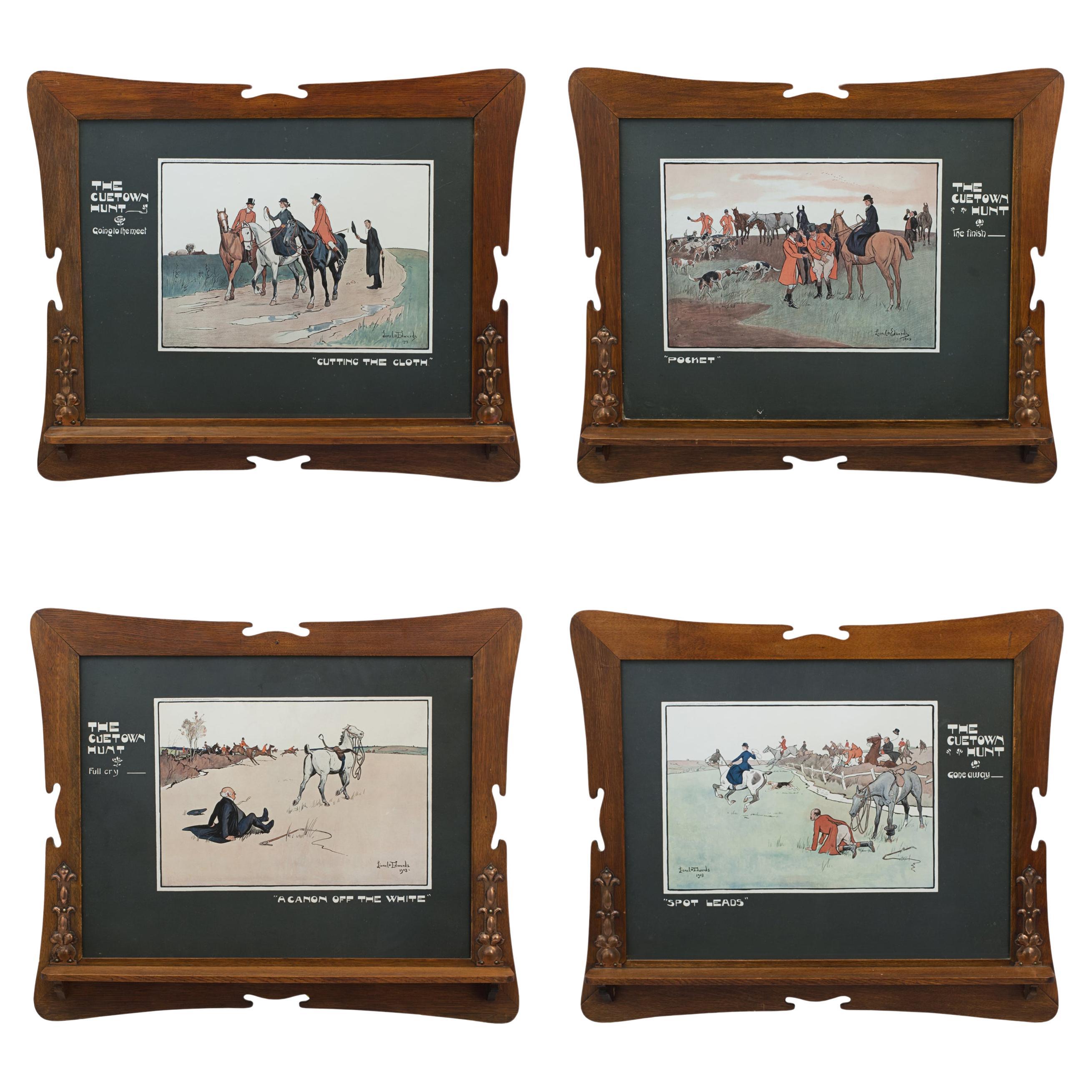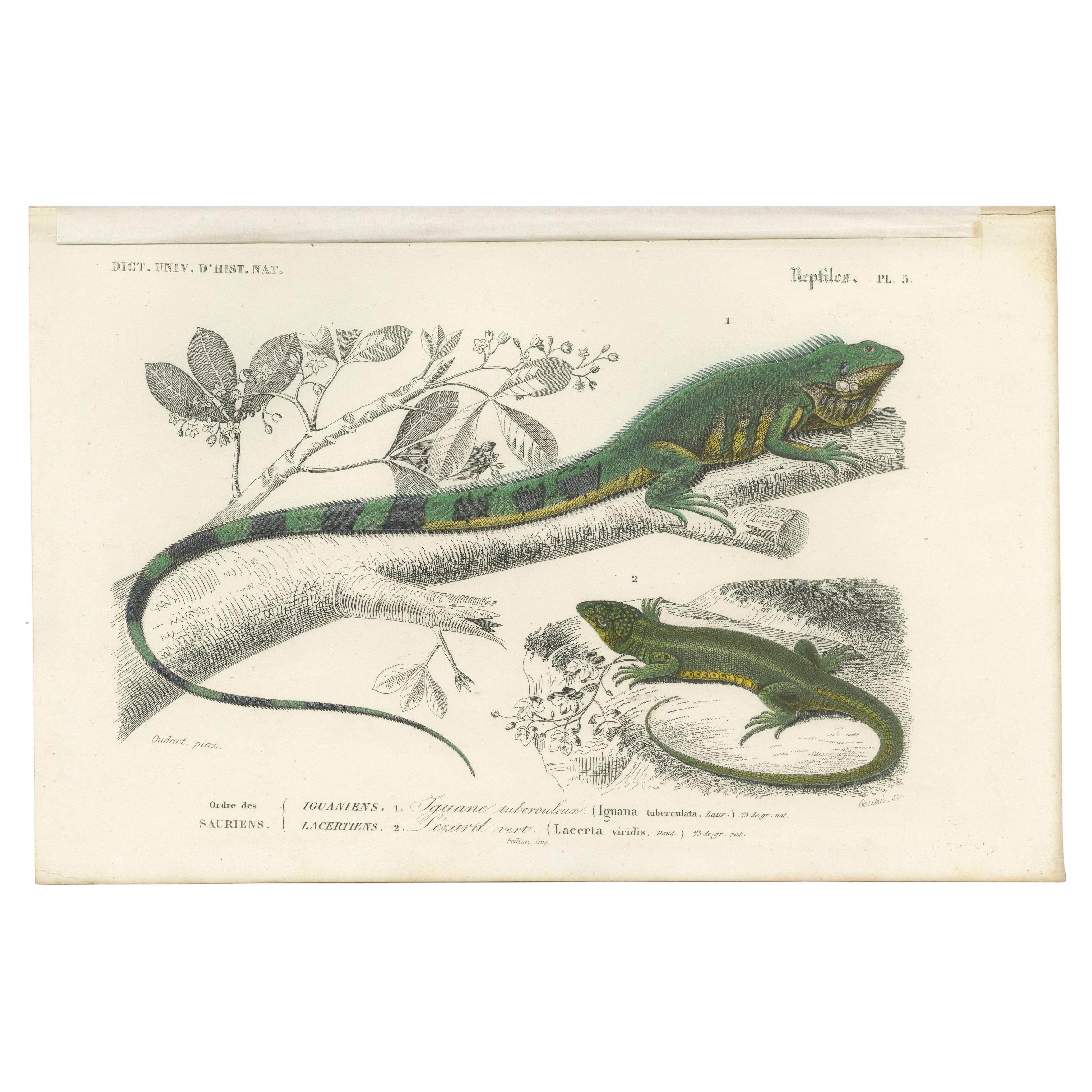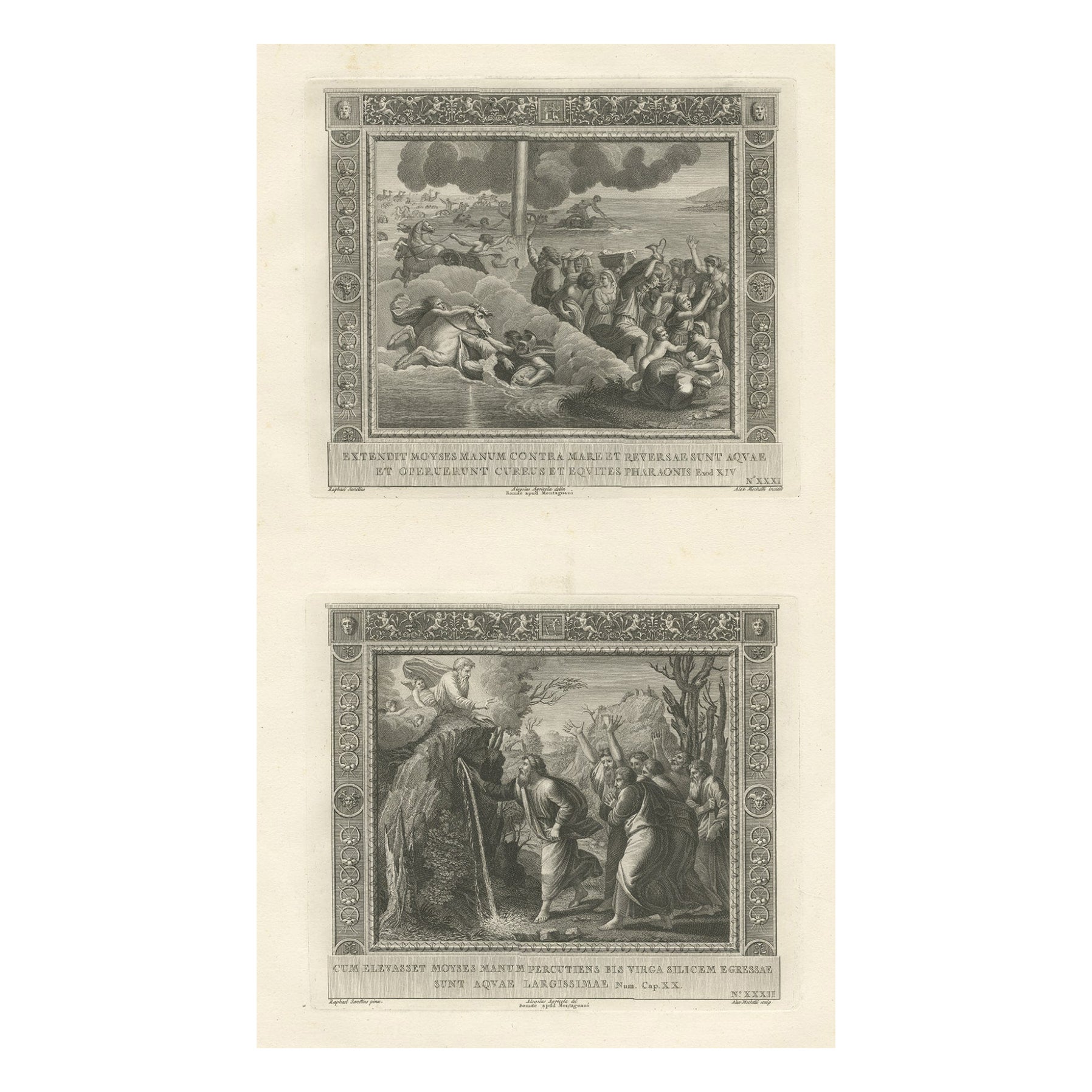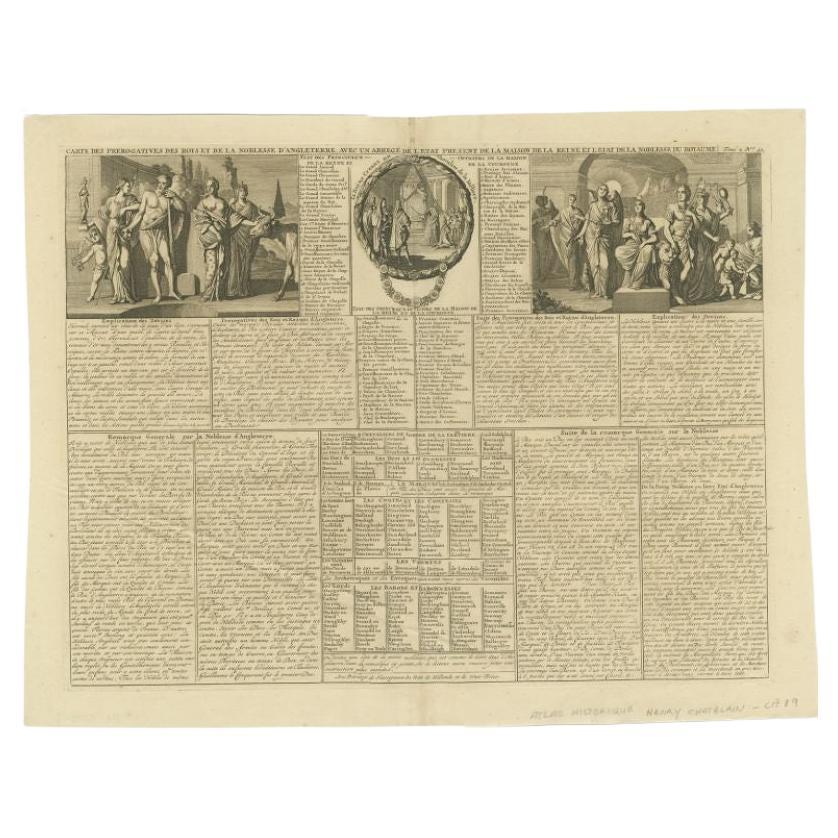Items Similar to Pair of British Hunt Prints of The Meet on the Green and Crossing the Green
Want more images or videos?
Request additional images or videos from the seller
1 of 12
Pair of British Hunt Prints of The Meet on the Green and Crossing the Green
About the Item
Very nice pair of rare prints from the late 19th century, circa 1890.
British, unattributed, scenes of ‘The Hunt”.
The first print is labelled “The Meet on the Green” and the second one is called “Crossing the Green”
Both scenes depict the gathering of The Hunt party on the Village Green to prepare for the fox hunt ahead.
Both in their original frames.
19th century pair of British Hunt Prints of The Meet on the Green and Crossing the Green.
FOX HUNTING: Fox hunting is an activity involving the tracking, chase, and sometimes killing of a fox, traditionally a red fox, by trained foxhounds or other scent hounds, and a group of unarmed followers led by a “master of foxhounds” (“master of hounds”), who follow the hounds on foot or on horseback.[1]
Fox hunting originated in the 16th century, in the form which was practiced legally until 2005 in Great Britain, but it also takes place all over the world, including in Australia, Canada, France, Ireland, Italy, and the United States.[2][3] In Australia, the term also refers to the hunting of foxes with firearms, similar to deer hunting or spotlighting. In much of the world, hunting in general is understood to relate to any game animals or weapons (e.g., deer hunting with bow and arrow); in Britain and Ireland, “hunting” without qualification implies fox hunting (or other forms of hunting with hounds—beagling, drag hunting, hunting the clean boot, mink hunting, or stag hunting), as described here.
The sport is controversial, particularly in the UK, where its traditional form was banned in Scotland in 2002, and in England and Wales in November 2004 (law enforced from February 2005),[4] although certain modified forms of hunting foxes with hounds are still within the law, and shooting foxes as vermin also remains lawful.
Proponents of fox hunting view it as an important part of rural culture, and useful for reasons of conservation and pest control,[5][6][7] while opponents argue that it is cruel and unnecessary.
Mounted hunt followers typically wear traditional hunting attire. A prominent feature of hunts operating during the formal hunt season (usually November to March in the northern hemisphere) is hunt members wearing ‘colors’. This attire usually consists of the traditional red coats worn by huntsmen, masters, former masters, whippers-in (regardless of sex), other hunt staff members and male members who have been invited by masters to wear colors and hunt buttons as a mark of appreciation for their involvement in the organization and running of the hunt.
Since the Hunting Act in England and Wales, only Masters and Hunt Servants tend to wear red coats or the hunt livery whilst out hunting. Gentleman subscribers tend to wear black coats, with or without hunt buttons. In some countries, ladies generally wear colored collars on their black or navy coats. These help them stand out from the rest of the field.
The traditional red coats are often misleadingly called “pinks”. Various theories about the derivation of this term have been given, ranging from the color of a weathered scarlet coat to the name of a purportedly famous tailor.
Some hunts, including most harrier and beagle packs, wear green rather than red jackets, and some hunts wear other colors such as mustard. The color of breeches vary from hunt to hunt and are generally of one color, though two or three colors throughout the year may be permitted.[86] Boots are generally English dress boots (no laces). For the men they are black with brown leather tops (called tan tops), and for the ladies, black with a patent black leather top of similar proportion to the men.[86] Additionally, the number of buttons is significant. The Master wears a scarlet coat with four brass buttons while the huntsman and other professional staff wear five. Amateur whippers-in also wear four buttons.
Another differentiation in dress between the amateur and professional staff is found in the ribbons at the back of the hunt cap. The professional staff wear their hat ribbons down, while amateur staff and members of the field wear their ribbons up.
Those members not entitled to wear colors, dress in a black hunt coat and unadorned black buttons for both men and ladies, generally with pale breeches. Boots are all English dress boots and have no other distinctive look.Some hunts also further restrict the wear of formal attire to weekends and holidays and wear ratcatcher (tweed jacket and tan breeches), at all other times.
Other members of the mounted field follow strict rules of clothing etiquette. For example, for some hunts, those under eighteen (or sixteen in some cases) will wear ratcatcher all season. Those over eighteen (or in the case of some hunts, all followers regardless of age) will wear ratcatcher during autumn hunting from late August until the Opening Meet, normally around November 1. From the Opening Meet they will switch to formal hunting attire where entitled members will wear scarlet and the rest black or navy. The highest honor is to be awarded the hunt button by the Hunt Master. This sometimes means one can then wear scarlet if male, or the hunt collar if female (color varies from hunt to hunt) and buttons with the hunt crest on them. For non-mounted packs or non-mounted members where formal hunt uniform is not worn, the buttons are sometimes worn on a waistcoat. All members of the mounted field should carry a hunting whip (it should not be called a crop). These have a horn handle at the top and a long leather lash (2-3 yards) ending in a piece of colored cord. Generally all hunting whips are brown, except those of Hunt Servants, whose whips are white.
- Dimensions:Height: 16.5 in (41.91 cm)Width: 20.5 in (52.07 cm)Depth: 1 in (2.54 cm)
- Sold As:Set of 2
- Style:High Victorian (Of the Period)
- Materials and Techniques:Paper,Engraved
- Place of Origin:
- Period:
- Date of Manufacture:1890
- Condition:Wear consistent with age and use. Minor fading. Good condition overall. Some minor foxing to the matting and minor chips to the frame edges.
- Seller Location:Dallas, TX
- Reference Number:1stDibs: LU3978118962022
About the Seller
4.9
Platinum Seller
These expertly vetted sellers are 1stDibs' most experienced sellers and are rated highest by our customers.
Established in 2015
1stDibs seller since 2018
Typical response time: <1 hour
- ShippingRetrieving quote...Ships From: Dallas, TX
- Return PolicyA return for this item may be initiated within 7 days of delivery.
More From This SellerView All
- 19th Century EAS Douglas Hunt Scene Aquatint EngravingLocated in Dallas, TXPresenting a lovely late 19th century, EAS Douglas hunt scene aquatint engraving. Hand colored and originally painted by Edward Algernon Stuart Douglas (1...Category
Antique Late 19th Century English Victorian Prints
MaterialsPaper
- Rare Lynn Bogue Hunt Engraving of Ducks Unlimited, 1940By Lynn Bogue HuntLocated in Dallas, TXPresenting a Rare Lynn Bogue Hunt engraving of ducks unlimited 1940. This piece cam from a wealthy estate in Dallas, TX with the mansion being built...Category
Mid-20th Century American Sporting Art Prints
MaterialsPaper
- 'The Dispersion of the Hala Tree by Madam Pele' Print by Dietrich VarezLocated in Dallas, TXPRESENTING a Lovely large sized wood block print of "The Dispersion of the Hala Tree by Madam Pele" by Dietrich Varez - 1979. Signed by the artist. Well known American/Hawaiian Art...Category
20th Century American Mid-Century Modern Prints
MaterialsPaper
- 19th Century Pair of British Oils on Canvas of River and Forest ScenesLocated in Dallas, TXPresenting a pair of classic Victorian oil paintings!! Unsigned oils on canvas featuring river and forest scenes. Both in the original frames. The British Victorians were ob...Category
Antique Mid-19th Century English High Victorian Paintings
MaterialsCanvas
- Set of Four Original Engravings of Hunting Scenes by John Frederick Herring SnrBy John Frederick Herring Sr.Located in Dallas, TXPresenting a fabulous and very rare set of original mid-19th century Chromolithograph Engravings by John Frederick Herring Snr from circa 1850. The exci...Category
Antique Mid-19th Century English High Victorian Prints
MaterialsPaper
- Early 19C Aquatint Engraving of Launcelot by John Frederick Herring SnrBy John Frederick Herring Sr.Located in Dallas, TXPresenting a fabulous and very rare, original early-19th century Chromolithograph Engraving after a painting by John Frederick Herring Snr, engraved by Cha...Category
Antique Mid-19th Century English High Victorian Prints
MaterialsPaper
You May Also Like
- Antique Print of a Deer Hunt on Horse, 1859Located in Langweer, NLThis antique print depicts a deer hunting scene (hunters on horses) and originates from 'Das Buch der Welt'. Artists and Engravers: Karl Hoffmann (1823-1859) was a German physici...Category
Antique 19th Century Prints
MaterialsPaper
- Antique Print 'Crossing the Brook' by W. Say, 1894Located in Langweer, NLAntique print depicting a woman guiding a young boy through a brook. Engraved by W. Say, published in 1894.Category
Antique Late 19th Century Prints
MaterialsPaper
- Lionel Edwards 'the Cuetown Hunt', Billiard PrintsBy Lionel EdwardsLocated in Oxfordshire, GBVintage Lionel Edwards Billiard Prints 'The Cuetown Hunt'. A wonderful and rare set of four colourful, humorous billiard chromolithographic prints in a...Category
Early 20th Century British Sporting Art Prints
MaterialsPaper, Wood
- Antique Print of the Green Iguana and European Green LizardLocated in Langweer, NLAntique print titled '1. Iguane tuberculeux, 2. Lezard vert. Original old print of a green iguana (a large lizard) and the European green lizard. This print originates from 'Dictionn...Category
Antique Mid-19th Century Prints
MaterialsPaper
- Religious Old Print of Moses Making Water & The Crossing of the Red Sea, ca.1850Located in Langweer, NLLarge antique print with two religious engravings. The upper image depicts the crossing of the Red Sea. The lower image depicts Moses makes the water spring out from the rock. This print originates from a work illustrating the complete series of Vatican frescos painted...Category
Antique 1850s Maps
MaterialsPaper
- Antique Print of the Monarchy and Nobles of Great Britain by Chatelain, c.1720Located in Langweer, NLAntique print titled 'Carte des Prerogatives des Rois et de la Noblesse d'Angleterre (..)'. Old print showing the privileges of the monarchy and nobles of Great Britain as well as th...Category
Antique 18th Century Prints
MaterialsPaper
